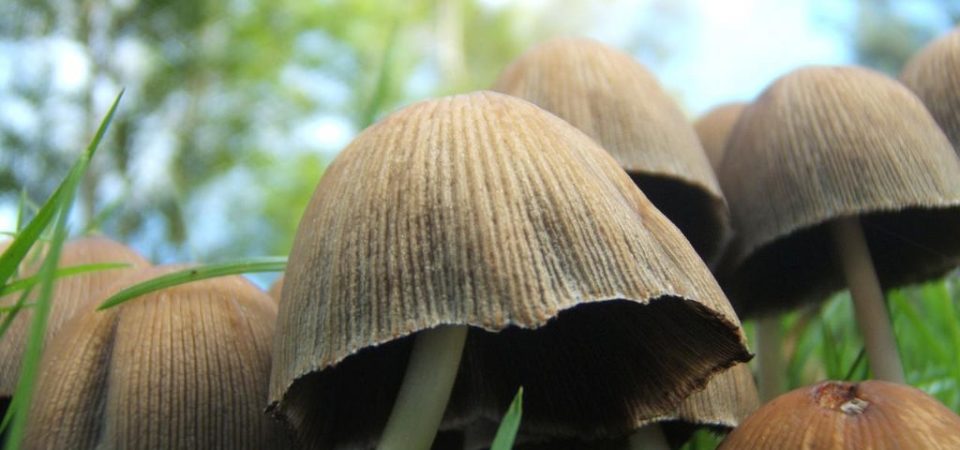Recent high profile conservation articles blame the loss of biodiversity on agriculture (e.g.: Biodiversity: The ravages of guns, nets and bulldozers, Maxwell et al. Nature 2016) but agriculture depends on biodiversity so something in the conservationist strategy has gone seriously wrong. The answer lies in what the conservation community has come to understand by the term ‘biodiversity’. To the majority of conservationists, the word refers to a relatively small number of the more charismatic species or groups, principally belonging to the vertebrates and higher plants. I call this ‘conservation biodiversity’. In contrast, the many millions of species that constitute the biodiversity that is the basic resource for all primary production, worldwide, I call ‘production biodiversity’. This is better known as the species in the complex soil and oceanic food chains that generate crops and fisheries. It is also the resource for other less familiar industries including pharmaceutical bioprospecting, engineering biomimetics and biological pest control (e.g.: Chapter 10, New Products and Industries from Biodiversity, Millennium Ecosystem Assessment).
This confusion might be somewhat resolved by re-defining biodiversity:
Biodiversity is the genetic, biochemical, metabolic, behavioural and population diversity of all species on Earth. It is the basic resource for all primary and many secondary industries worldwide and is therefore at the core of the global economy and at the heart of all human societies. While biodiversity varies geographically and may change rapidly over small distances, it is found everywhere and is economically important to everyone.
Most of the estimated 30 million species on Earth are either microbial or invertebrate and generate the complex food webs and metabolic activities that support agriculture and forestry on land, and fisheries in freshwater and marine environments. Knowledge of the biology, ecology and utility of these species is being rapidly generated but a vast amount awaits discovery, including the total number of species and the biological wealth they represent.
Study of the economic values of the invertebrates is a work in progress but the importance of earthworms in agriculture were highlighted by Charles Darwin 150 years ago. More recently, the economic activities of insect pollinators have been closely monitored and valued showing that an enormous variety of bees, both native and introduced, wasps, flies and other insects generate agricultural incomes in the billions of dollars globally, for example: Safeguarding pollinators and their values to human beings (Potts et al., Nature 2016) and Global biodiversity report warns pollinators are under threat (Gilbert, Nature 2016).
Other insects are bred on an industrial scale for the biological control of pests through their predatory and parasitic behaviour. Other values are more elusive to the general public, for example, many people question the value of mosquitos but their larvae are intrinsic to the food webs on which freshwater fish, and hence human fishermen depend.
The economic values of microorganisms are probably best known through the activities of soil microbes as soil bacteria and fungi regulate the structure and chemistry of soils, interacting with their abiotic components to generate the nutrients upon which all plant growth, including crops, grazing forage, plantations and native vegetation all depend. The number of species involved is unknown although it is expected to exceed the number of all other species combined. While the exploration of microbes of the marine environments is still in its infancy, organisms are being discovered that do not fit any current biological classifications emphasising how little it known of this vast frontier.
Conservation research and practice, as carried out by zoos, universities, NGOs and government departments, is largely focused on a relatively small number of species, mostly vertebrates and flowering plants. Often charismatic, these species are those best known to science and the public. By contrast, the majority of microbes and invertebrates are less known and under-appreciated for their scientific, economic and aesthetic values. Little is known about whether or not any of them are endangered by industrial methods in agricultural and fisheries, global warming, pollution or other threats.
The situation is encapsulated by Professor Tom Curtis in the July 2006 edition of Nature Reviews Microbiology who wrote:
“I make no apologies for putting microorganisms on a pedestal above all other living things, for if the last blue whale choked to death on the last panda, it would be disastrous but not the end of the world. But if we accidentally poisoned the last two species of ammonia-oxidisers, that would be another matter. It could be happening now and we wouldn’t even know…”
It makes no sense to antagonise or demonise the most important non-conservation land-holders across the world. One rather obvious solution to this tragic situation is to put conservationists and farmers in the same room. Fortunately, this has already been achieved on a small scale and has resulted in landscapes transformed into mosaics of agricultural and conservation tenures, effectively mosaics of production biodiversity and conservation biodiversity. This recognises and enhances the mutual benefits of the two biodiversity categories. Mostly absent from those rooms have been representatives from the major agriculture industries and their government counterparts. If these parties who currently see themselves as enemies because of the current understanding of the word ’biodiversity’ do not get together soon, then George Monbiot’s fear that we have already passed ‘peak’ harvests may come true.
Andrew Beattie is currently an Emeritus Professor at Macquarie University.
MAHB-UTS Blogs are a joint venture between the University of Technology Sydney and the Millennium Alliance for Humanity and the Biosphere. Questions should be directed to joan@mahbonline.org
MAHB Blog: https://mahb.stanford.edu/blog/conservation-production-biodiversity/
The views and opinions expressed through the MAHB Website are those of the contributing authors and do not necessarily reflect an official position of the MAHB. The MAHB aims to share a range of perspectives and welcomes the discussions that they prompt.
